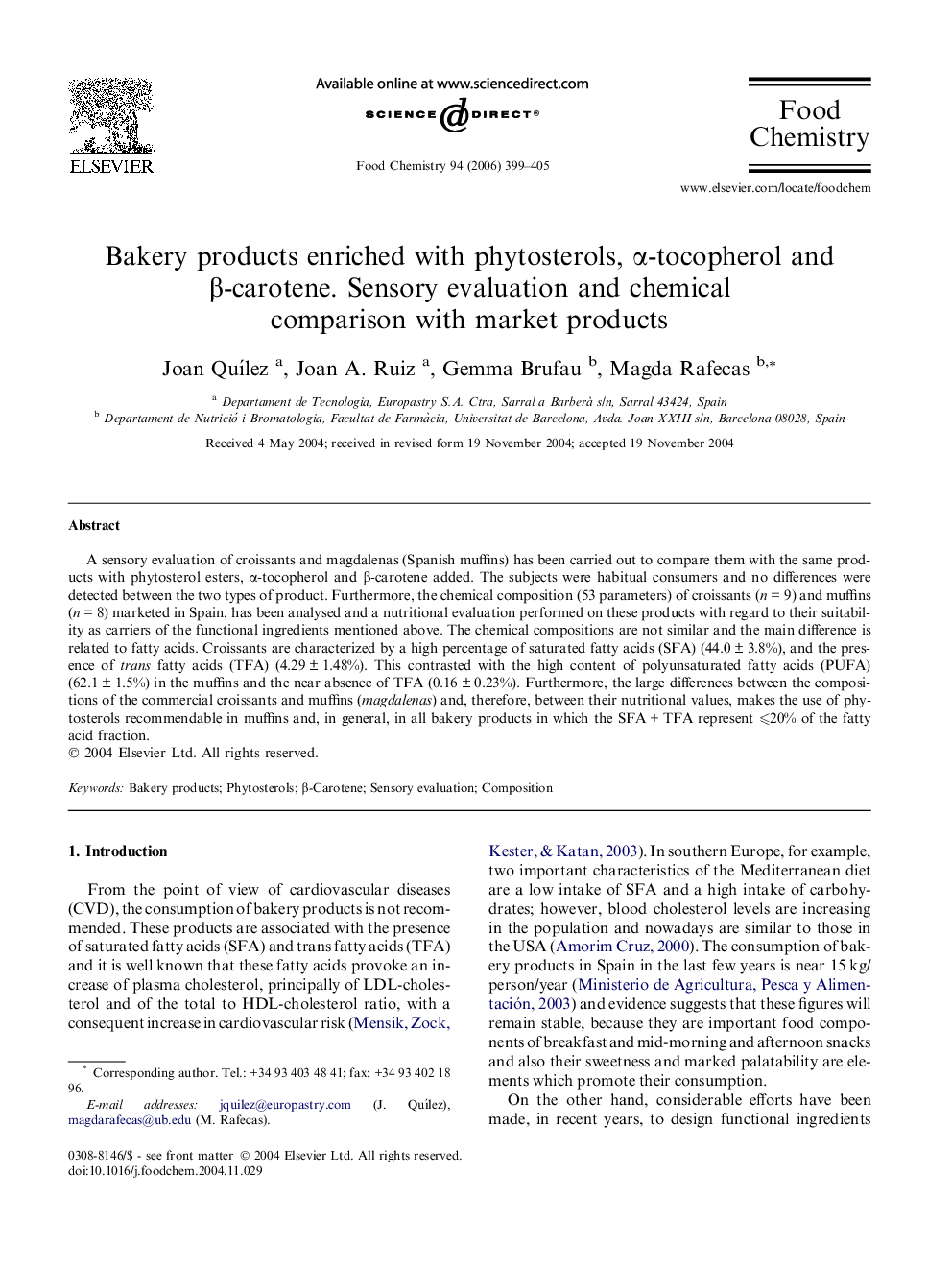| Article ID | Journal | Published Year | Pages | File Type |
|---|---|---|---|---|
| 1191999 | Food Chemistry | 2006 | 7 Pages |
A sensory evaluation of croissants and magdalenas (Spanish muffins) has been carried out to compare them with the same products with phytosterol esters, α-tocopherol and β-carotene added. The subjects were habitual consumers and no differences were detected between the two types of product. Furthermore, the chemical composition (53 parameters) of croissants (n = 9) and muffins (n = 8) marketed in Spain, has been analysed and a nutritional evaluation performed on these products with regard to their suitability as carriers of the functional ingredients mentioned above. The chemical compositions are not similar and the main difference is related to fatty acids. Croissants are characterized by a high percentage of saturated fatty acids (SFA) (44.0 ± 3.8%), and the presence of trans fatty acids (TFA) (4.29 ± 1.48%). This contrasted with the high content of polyunsaturated fatty acids (PUFA) (62.1 ± 1.5%) in the muffins and the near absence of TFA (0.16 ± 0.23%). Furthermore, the large differences between the compositions of the commercial croissants and muffins (magdalenas) and, therefore, between their nutritional values, makes the use of phytosterols recommendable in muffins and, in general, in all bakery products in which the SFA + TFA represent ⩽20% of the fatty acid fraction.
